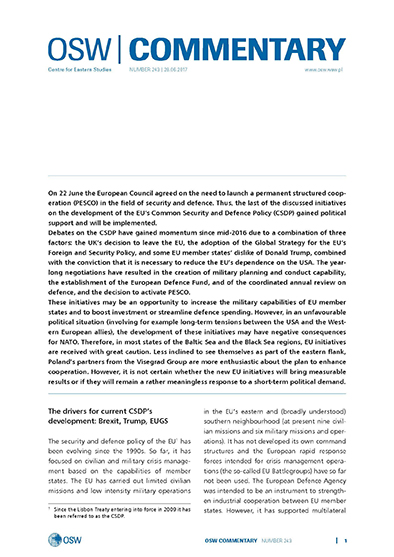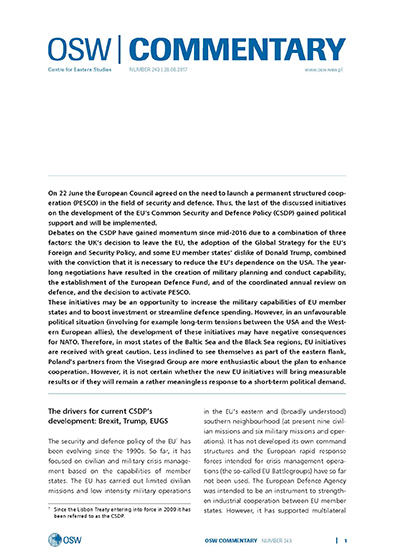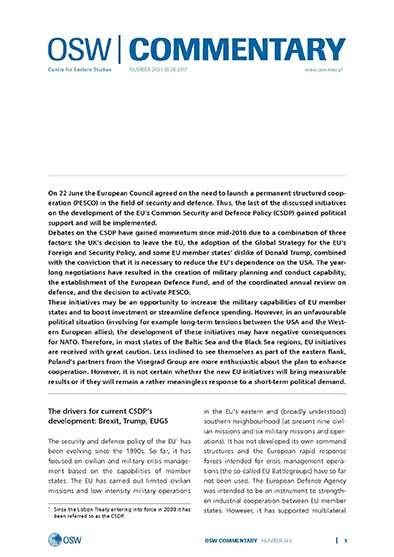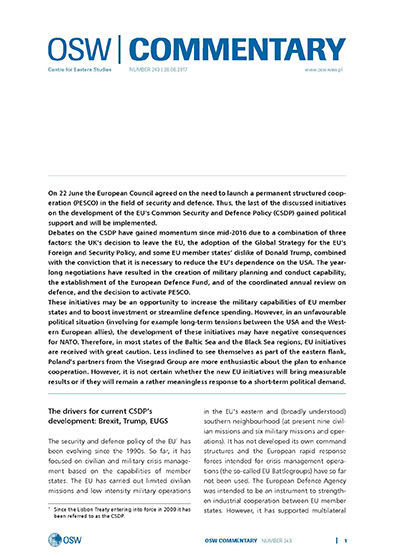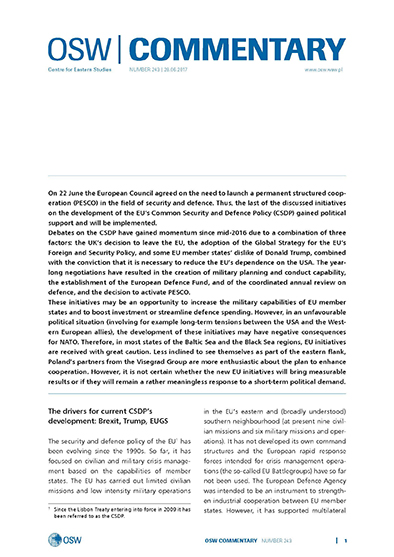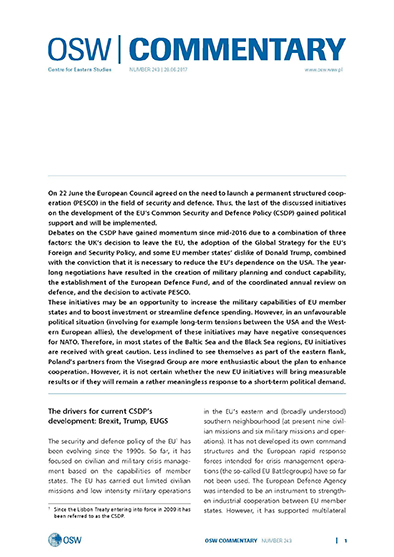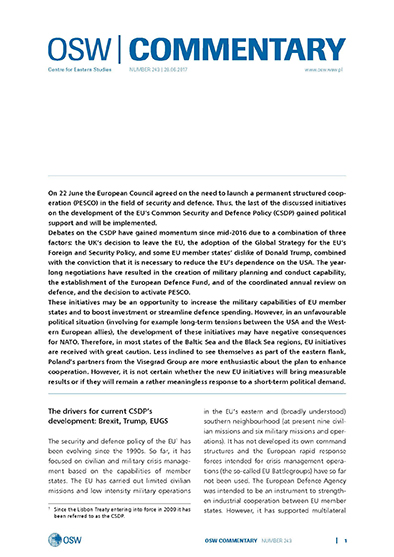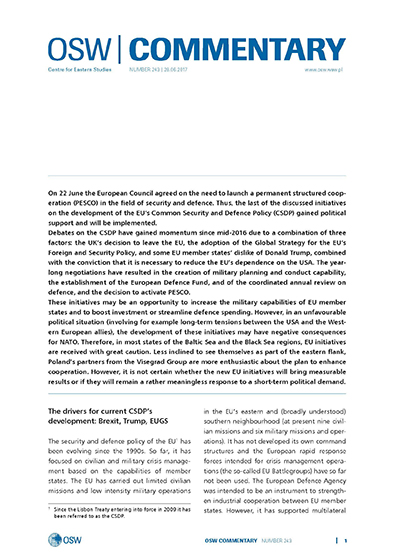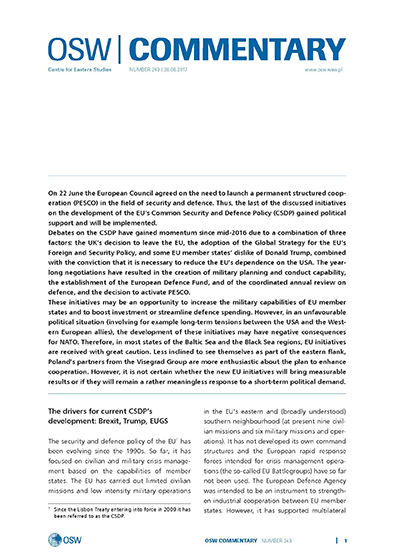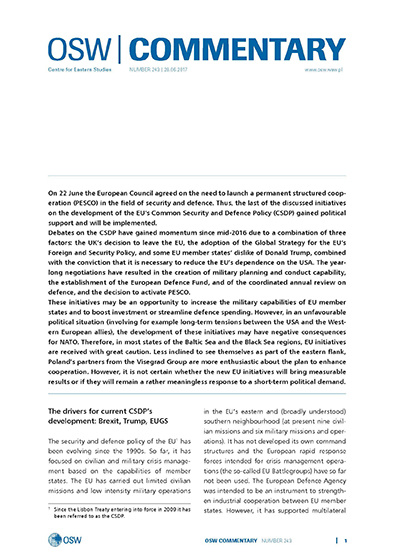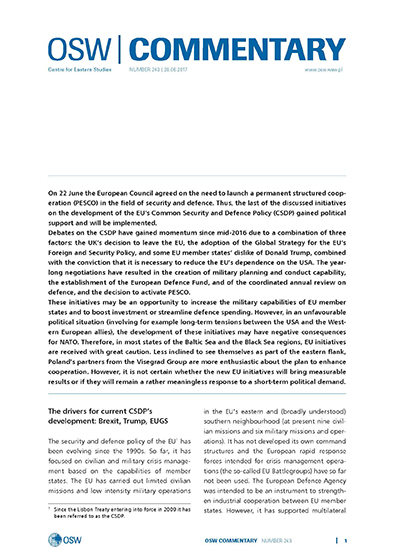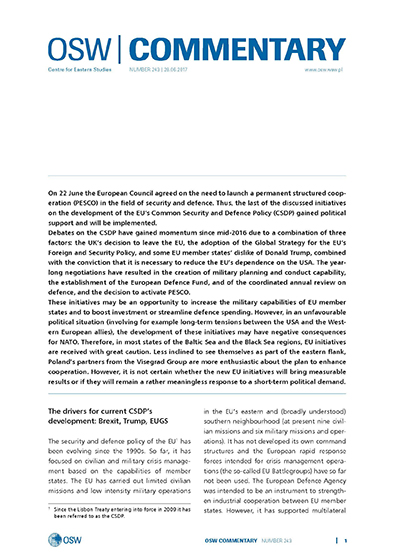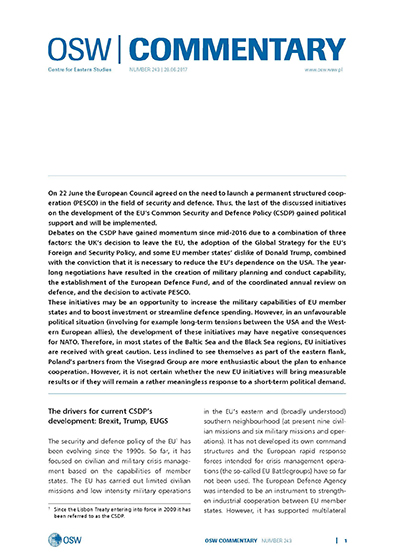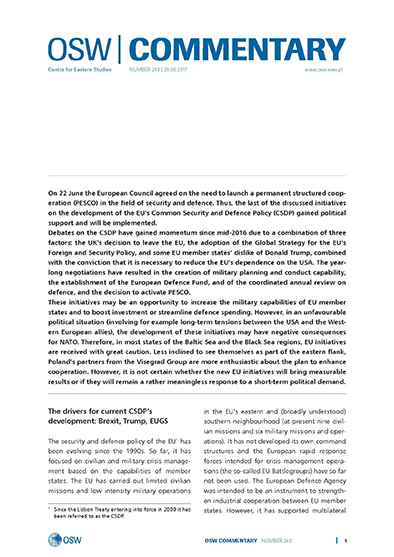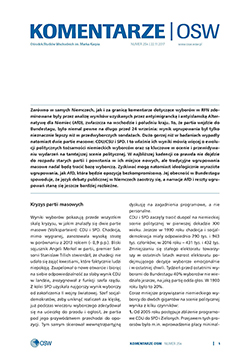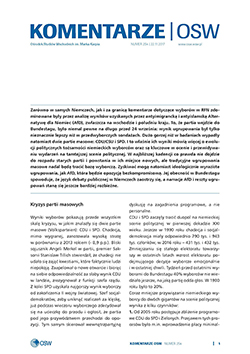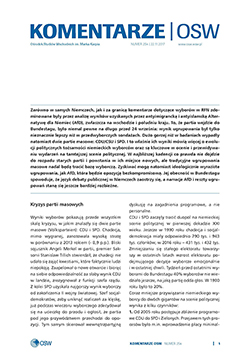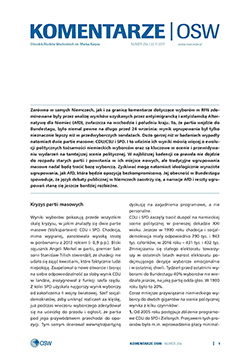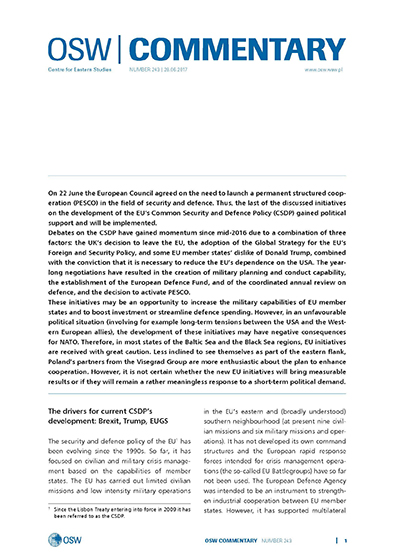
Pro-American non-alignment. Sweden and Finland develop closer military co-operation with the United States
Russia’s increasingly aggressive policy and its enhanced military activity in the Nordic-Baltic region has led to revaluations in Sweden’s and Finland’s security and defence policies and a rethinking of the formats of their military co-operation. While remaining outside NATO, the two states have been developing closer bilateral defence co-operation and working more closely with the United States, while at the same time developing co-operation with NATO. Sweden and Finland perceive the United States as the guarantor of regional and European security. From their point of view, the United States is currently the country that has both the necessary military capabilities and the political will to react in the event of a conflict between Russia and NATO in the Nordic-Baltic region, in which both countries would inevitably become involved despite their non-aligned status. For Sweden and Finland, intensified co-operation with the United States offers an alternative to NATO membership, which is currently out of the question for domestic political reasons. Meanwhile, the US has also become increasingly aware of the strategic importance of the two states, which, for the purposes of contingency planning, are in fact an extension of NATO’s north-eastern flank.
More...
